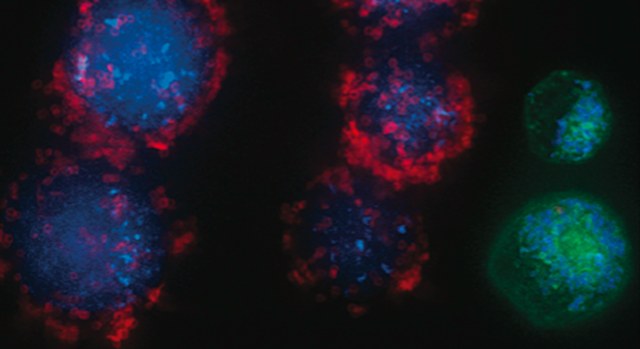Scientists are designing materials that are a thousand times smaller than the width of a hair.
Known as nanomaterials or nanoparticles, some could help treat diseases.
However, the engineering of particles for biomedical applications remains challenging, particularly when moving from the test tube to biological environments.
Read more: Skin patches instead of needles: can nanotechnology vaccinate the world?

This is an issue we discussed in a recent paper. A nanoparticle in the lab is one thing, but a nanoparticle interacting with blood, cells and tissues is another, and the behaviour of particles can change considerably when moving from one environment to another.
“Bio-nano interactions” are what govern these changes in behaviour, and this is a research area with plenty of difficulties, but also significant rewards.
Using nanoparticles to target diseases
Nanoparticles could help create more effective medical treatments. The aim is to improve areas ranging from drug delivery to the detection of diseases.
One of the potential benefits of nanoparticles is the possibility of developing targeted therapies, so that drugs go exactly where they are needed in the body.
For example, many highly effective chemo-therapeutics exist today, but because they do not interact only with cancer cells but with healthy ones too, many of them have side effects such as heart and bone marrow damage. This limits their efficacy and plays a big role in why treating cancer can be so difficult.
Why is targeting so hard?
But targeted drug therapies using nanoparticles also remain limited. As in many other areas, what works in the laboratory can be difficult to translate into the clinic.
One example is the use of nanoparticles as “carriers” that are loaded with a drug and then accumulate at target cells (see image below).

These types of nanoparticles can perform well in the laboratory, but when used in more complex biological environments (such as in blood rather than in salt buffer solution) things rapidly become more complicated.
For example, when nanoparticles are injected into blood, proteins adsorb onto their surface and this can completely change their behaviour. This is because this bio-coating changes important properties of the particles, including charge (positive, neutral or negative) and size.
Possible solutions
New methods are being developed to evaluate nanoparticles in better ways. This includes investigative techniques that can complement cell and animal studies.
One example is microfluidic channels that can mimic blood vessels and can be used to study nanomaterial behaviour in blood capillaries.
Another option uses 3D printed tissues and organs. In one recent example, hydrogels filled with cells were printed onto a surface using a custom-built 3D printer.
The key point is to have adjustable complexity. That is, being able to adjust these methods so that we can get relevant and valuable information out of the studies. But not so complex that it becomes difficult to understand the mechanisms involved.
This is important, because a nanoparticle administered to an animal experiences several levels of biological complexity on its journey from the bloodstream to the target area (see image below). To understand fully what is happening, we need to study them all.

Nanomedicines of tomorrow
The more we learn about bio-nano science – or how materials interact with biology on the nanoscale – the easier it will be to design nanoparticles that behave like we want them to.
After years of concerted efforts, a more clear picture of the mechanisms that determine how well a nanoparticle will work is emerging and the full extent of the challenge before us is starting to become clear.
It is unlikely that a single “quick fix” will be discovered.
Read more: Nanotechnology could make our food tastier and healthier – but can we stomach it?
Instead, research that manages to successfully combine ideas from different fields and researchers will likely lead to the development of new and improved targeted nanoparticles.
The aim is to provide new treatments for diseases that are difficult – or even impossible – to treat today.

